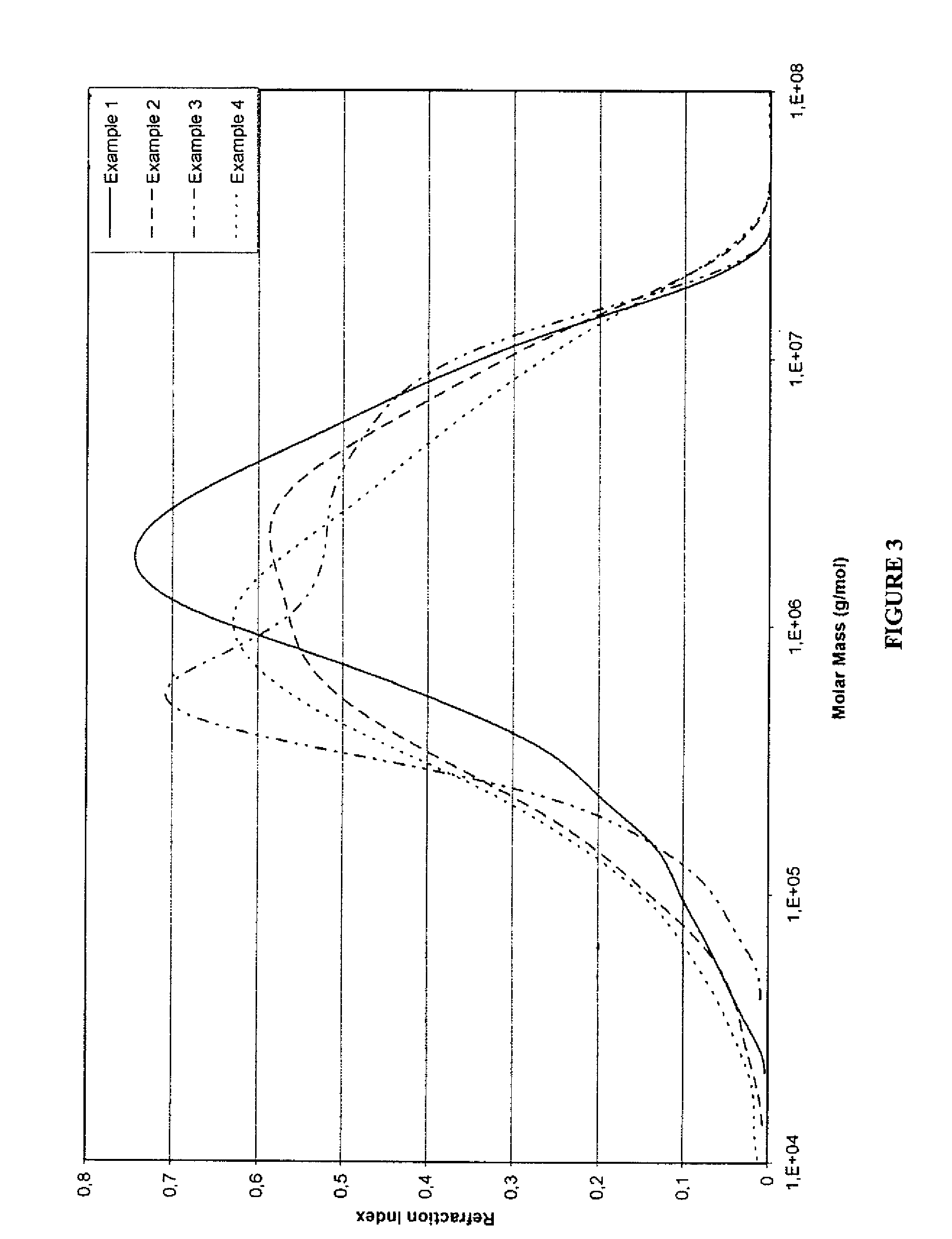Suspension polymerization process for manufacturing ultra high molecular weight polyethylene, a multimodal ultra high molecular weight polyethylene homopolymeric or copolymeric composition, a ultra high molecular weight polyethylene, and their uses
a polyethylene and suspension technology, applied in the direction of monocomponent polyolefin artificial filament, etc., can solve the problems of non-homogeneous materials, difficult control of the amount and productivity of the two catalysts used to control the low and high molecular weight fractions, and inconvenient production of ultra high molecular weight polyolefins, etc., to achieve high draw ratio, easy solubility, and high stability during spinning
- Summary
- Abstract
- Description
- Claims
- Application Information
AI Technical Summary
Benefits of technology
Problems solved by technology
Method used
Image
Examples
examples 1 to 4
of the Present Invention
[0083]Examples 1 to 4 were conducted in a pilot plant having two reactors, both being CSTR (continuous stirring tank reactor), of 2 m3 each, having water circulation jackets both. The polymerization was carried out in a continuous phase, and process conditions are summarized in table 2. The configuration used was a reactor in series setup, which allowed production of bimodal polymers, as shown in FIG. 2. The reaction takes place in two reactors, wherein all the polymer formed in the first reactor is transferred to the second one. In these examples, the total pressure in the first reactor is greater than that in the second, and the polymer formed in the first reactor corresponds to the lower molecular weight fraction of the final polymer.
[0084]Molecular weight fractions in each of the examples 1-4 were measured using a GPC technique and the results are shown on FIG. 3. On this figure, molecular weight is shown on the x axis in g / mol, while refraction index is ...
example 5
of the Present Invention
[0085]In this example, the purpose was to produce an ultra high molecular weight polyethylene, operating the first reactor at a total pressure lower than that of the second reactor, and the polymer thus formed in the first reactor corresponds to the higher molecular weight fraction of the final polymer. The hydrogen to ethylene ratios in the first and second reactors were in the ranges of 0.4-0.5% and 8-10%, respectively. The pressure in the first reactor was kept within 0.9-1.1 MPa, and in the second reactor, within 1.1-1.2 MPa. The weight-average molecular weight was 2.5×106 g / mol and the polydispersity was 9.
PUM
| Property | Measurement | Unit |
|---|---|---|
| temperature | aaaaa | aaaaa |
| pressure | aaaaa | aaaaa |
| polydispersity | aaaaa | aaaaa |
Abstract
Description
Claims
Application Information
 Login to View More
Login to View More - R&D
- Intellectual Property
- Life Sciences
- Materials
- Tech Scout
- Unparalleled Data Quality
- Higher Quality Content
- 60% Fewer Hallucinations
Browse by: Latest US Patents, China's latest patents, Technical Efficacy Thesaurus, Application Domain, Technology Topic, Popular Technical Reports.
© 2025 PatSnap. All rights reserved.Legal|Privacy policy|Modern Slavery Act Transparency Statement|Sitemap|About US| Contact US: help@patsnap.com



